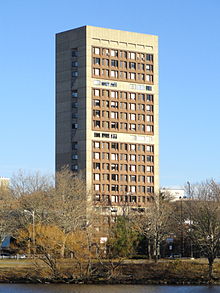
Harvard College is the undergraduate college of Harvard University, a private Ivy League research university in Cambridge, Massachusetts. Part of the Faculty of Arts and Sciences, Harvard College is Harvard University's traditional undergraduate program, offering AB and SB degrees. It is highly selective, with fewer than four percent of applicants being offered admission as of 2022. Harvard College students participate in over 450 extracurricular organizations and nearly all live on campus. First-year students reside in or near Harvard Yard and upperclass students reside in other on-campus residential housing.
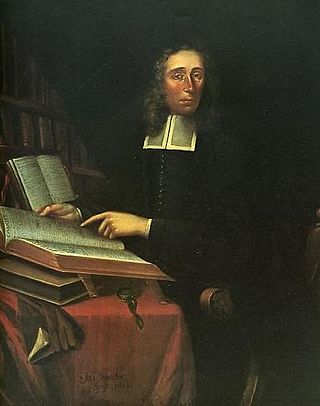
Increase Mather was a New England Puritan clergyman in the Massachusetts Bay Colony and president of Harvard College for twenty years (1681–1701). He was influential in the administration of the colony during a time that coincided with the notorious Salem witch trials.
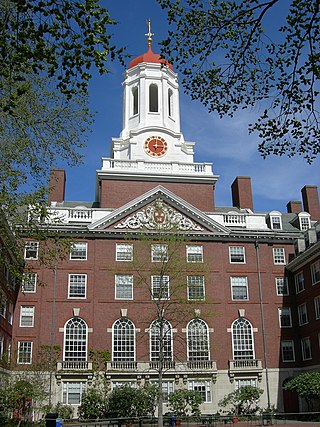
Dunster House is one of twelve undergraduate residential Houses at Harvard University. Built in 1930, it is one of the first two dormitories at Harvard University constructed under President Abbott Lawrence Lowell's House Plan and one of the seven Houses given to Harvard by Edward Harkness. In the early days, room rents varied based on the floor and the size of the room. Dunster was unique among Harvard dormitories for its sixth-story walk-up ; these rooms were originally rented by poorer students, such as Norman Mailer.

Keene State College is a public liberal arts college in Keene, New Hampshire. It is part of the University System of New Hampshire. Founded in 1909 as a teacher's college, Keene State College had 3,104 students enrolled for credit as of fall 2021.
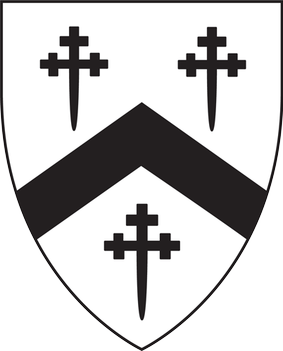
Davenport College is one of the fourteen residential colleges of Yale University. Its buildings were completed in 1933 mainly in the Georgian style but with a gothic façade along York Street. The college was named for John Davenport, who founded Yale's home city of New Haven, Connecticut. An extensive renovation of the college's buildings occurred during the 2004–2005 academic year as part of Yale's comprehensive building renovation project. Davenport College has an unofficial rivalry with adjoining Pierson College.
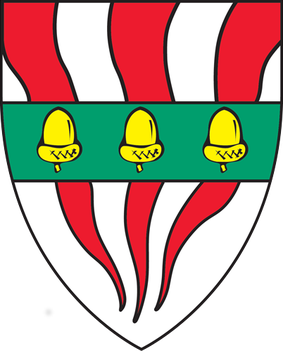
Silliman College is a residential college at Yale University in New Haven, Connecticut, named for scientist and Yale professor Benjamin Silliman. It opened in September 1940 as the last of the original ten residential colleges, and contains buildings constructed as early as 1901.

Trumbull College is one of fourteen undergraduate residential colleges of Yale University in New Haven, Connecticut. The college is named for Jonathan Trumbull, governor of Connecticut from 1769 to 1784 and advisor and friend to General George Washington. A Harvard College graduate, Trumbull was the only colonial governor to support the American Revolution.

Jonathan Edwards College is a residential college at Yale University. It is named for theologian and minister Jonathan Edwards, a 1720 graduate of Yale College. JE's residential quadrangle was the first to be completed in Yale's residential college system, and was opened to undergraduates in 1933.

Pforzheimer House, nicknamed PfoHo (FOE-hoe) and formerly named North House, is one of twelve undergraduate residential Houses at Harvard University. It was named in 1995 for Carol K. and Carl Howard Pforzheimer Jr, major University and Radcliffe College benefactors, and their family.
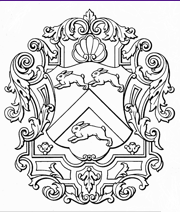
Leverett House is one of twelve undergraduate residential Houses at Harvard University. It is situated along the north bank of the Charles River in Cambridge and consists of McKinlock Hall, constructed in 1925; two 12-story towers completed in 1960; and two floors of 20 DeWolfe Street, a building Leverett shares with two other houses at Harvard. It has the largest student population within the Harvard house system.
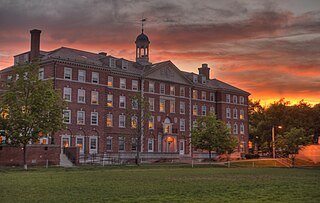
Cabot House is one of twelve undergraduate residential Houses at Harvard University. Cabot House derives from the merger in 1970 of Radcliffe College's South and East House, which took the name South House, until the name was changed and the House reincorporated in 1984 to honor Harvard benefactors Thomas Cabot and Virginia Cabot. The house is composed of six buildings surrounding Radcliffe Quadrangle; in order of construction, they are Bertram Hall (1901), Eliot Hall (1906), Whitman Hall (1911), Barnard Hall (1912), Briggs Hall (1923), and Cabot Hall (1937). All six of these structures were originally women-only Radcliffe College dormitories until they were integrated in 1970. Along with Currier House and Pforzheimer House, Cabot is part of the Radcliffe Quad.
Lowell House is one of twelve undergraduate residential Houses at Harvard University, located at 10 Holyoke Place facing Mount Auburn Street between Harvard Yard and the Charles River. Officially, it is named for the Lowell family, but an ornate ALL woven into the ironwork above the main gate discreetly alludes to Abbott Lawrence Lowell, Harvard's president at the time of construction. Its majestic neo-Georgian design, centered on two landscaped courtyards, received the 1938 Harleston Parker Medal and might be considered the model for later Harvard houses nearby. Lowell House is simultaneously close to the Yard, Harvard Square, and other Harvard "River" houses, and its blue-capped bell tower, visible for many miles, is a local landmark.
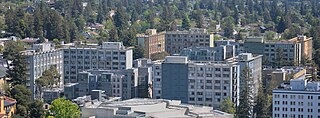
Housing at the University of California, Berkeley, includes student housing facilities run by the office of Residential and Student Service Programs (RSSP). Housing is also offered by off-campus entities such as fraternities and sororities and the Berkeley Student Cooperative (BSC).

Memorial Hall, immediately north of Harvard Yard in Cambridge, Massachusetts, is a large High Victorian Gothic building honoring Harvard men's sacrifices in defense of the Union during the American Civil War—"a symbol of Boston's commitment to the Unionist cause and the abolitionist movement in America."
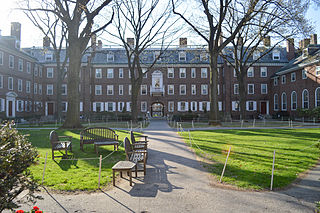
Kirkland House is one of twelve undergraduate residential Houses at Harvard University, located near the Charles River in Cambridge, Massachusetts. It was named after John Thornton Kirkland, president of Harvard University from 1810 to 1828.

Harvard University is a private Ivy League research university in Cambridge, Massachusetts, United States. Founded in 1636 as Harvard College and named for its first benefactor, the Puritan clergyman John Harvard, it is the oldest institution of higher learning in the United States. Its influence, wealth, and rankings have made it one of the most prestigious universities in the world.

Quincy House is one of twelve undergraduate residential Houses at Harvard University, located on Plympton Street between Harvard Yard and the Charles River. The second largest of the twelve undergraduate houses, Quincy House was named after Josiah Quincy III (1772–1864), president of Harvard from 1829 to 1845. Quincy House's official counterpart at Yale University is Branford College.
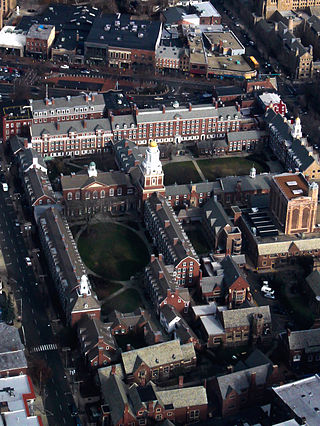
Yale University has a system of fourteen residential colleges with which all Yale undergraduate students and many faculty are affiliated. Inaugurated in 1933, the college system is considered the defining feature of undergraduate life at Yale College, and the residential colleges serve as the residence halls and social hubs for most undergraduates. Construction and programming for eight of the original ten colleges were funded by educational philanthropist Edward S. Harkness. Yale was, along with Harvard, one of the first universities in the United States to establish a residential college system.

Franklin University Switzerland is a private university in Lugano, Switzerland. Founded in 1969, Franklin is one of the oldest American institutions of higher education in Europe and the first to be established in Switzerland. Franklin offers Bachelor of Arts and Master of Science degrees accredited in both the United States and Switzerland.

Dudley Community is an alternative to Harvard College's 12 Houses. The Dudley Community serves nonresident undergraduate students, visiting undergraduate students, and undergraduates living in the Dudley Co-op. In 2019, the Dudley Community was formed, reflecting the administrative split between the undergraduate and graduate programs that were under Dudley House since 1991. Affiliated undergraduates have access to Dudley Community advisers, programs, intramural athletics, and organized social events. Dudley Community administrative offices are currently housed in two suites in 10 DeWolfe St in Cambridge after moving from Lehman Hall. Lehman Hall now houses the student center for the Harvard Graduate School of Arts and Science.
